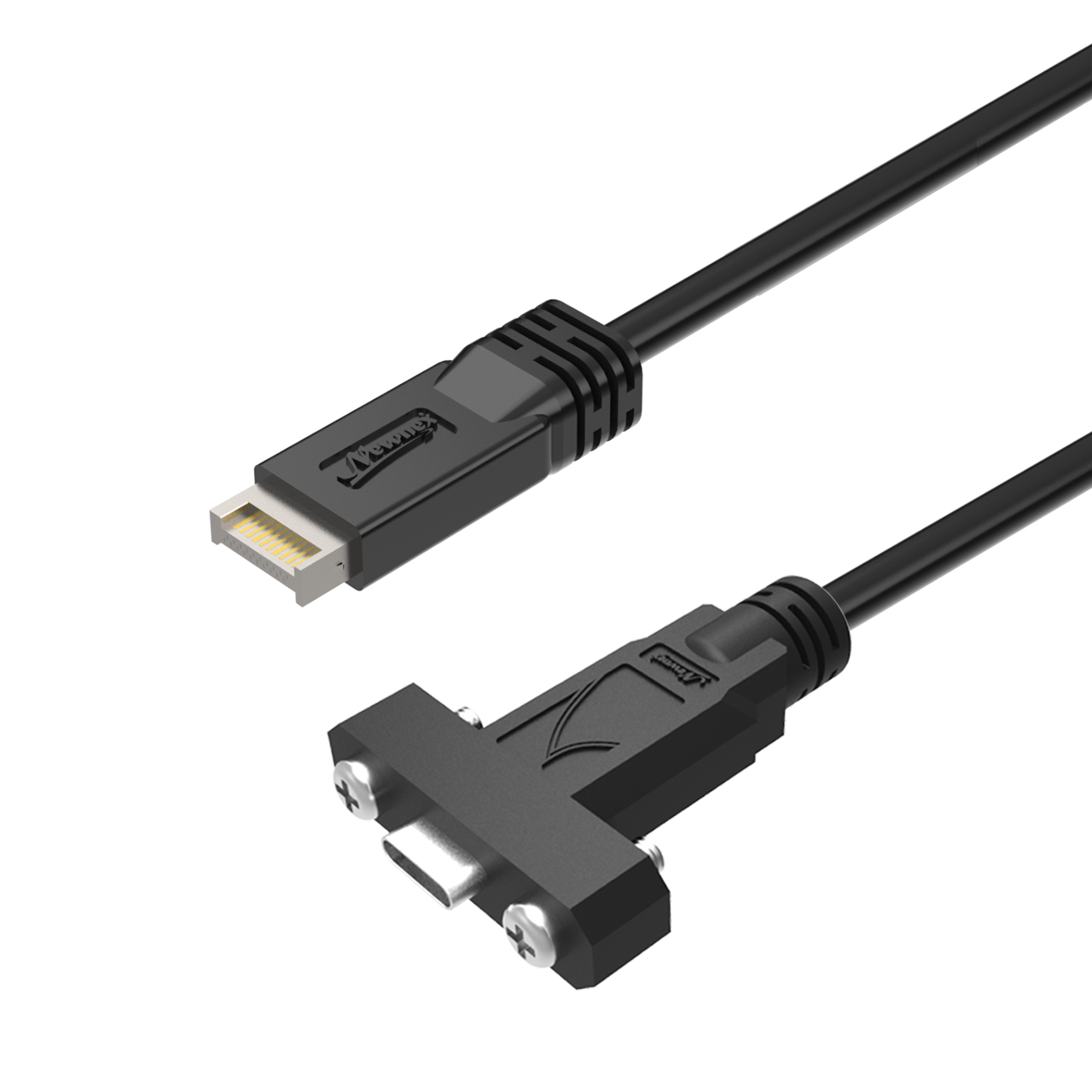Understanding Motherboard USB Headers and Ports
As USB standards have advanced, so too have these internal connections—bringing faster speeds, new connector types, and varying compatibility requirements. Internal USB headers, often overlooked in spec sheets, play a key role in powering front panel USB ports and enabling communication with internal devices like liquid coolers, Bluetooth modules, and card readers. For system builders, integrators, and anyone customizing a PC setup, understanding these headers is essential for ensuring full USB functionality across both external and internal devices.
History of USB Headers on Motherboards
USB headers on motherboards provide internal connections for USB ports on the front panel of a PC case or other USB devices. Here's a brief history of their development and how they've evolved with USB standards.
-XX_large.png)
Early USB (USB 1.1 / USB 2.0) – 1998 to Early 2000s
USB 2.0 headers were the first motherboard-mounted connectors designed to support front-panel ports and simple internal devices. They enabled data rates up to 480 Mbps, a huge jump from the original 12 Mbps USB 1.1 spec. Even today, these reliable dual-row headers remain popular in legacy and budget systems.
- Header Type: 9-pin (sometimes 5-pin) USB 2.0 header
- Connector Layout: 2×5 pins in a dual-row
- Pinout: 9-pin supports two ports; 5-pin supports one
- Speed Support: USB 1.1 (12 Mbps) & USB 2.0 (480 Mbps)
- Use Case: Front-panel ports, internal devices (AIO, RGB, fan controllers)

USB 3.0 / USB 3.1 Gen 1 – Introduced 2010
USB 3.0 headers brought SuperSpeed support with up to 5 Gbps data lanes via a distinctive blue 19-pin connector. This leap enabled high-bandwidth peripherals, though it wasn’t plug-compatible with USB 2.0. Today, most motherboards include both header types for full device coverage.
- Header Type: 19-pin USB 3.0 header (USB-IF standard)
- Connector Layout: Dual-row, wide blue housing
- Pinout: Supports two USB 3.0 ports
- Speed Support: USB 3.0 / USB 3.1 Gen 1 (5 Gbps)
- Compatibility: Requires separate USB 2.0 header

USB 3.1 / USB 3.2 – Type-E Connector
The Type-E header supports 10–20 Gbps speeds and front-panel USB-C ports via a 20-pin form factor. It delivers high throughput and enhanced power delivery—but requires both a compatible motherboard and a dedicated header cable.
- Header Type: USB 3.1 Type-E (20-pin)
- Speed Support: Up to 20 Gbps
- Use Case: USB 3.2 Gen 2×1 or ×2 front-panel USB-C ports
- Compatibility: Requires Type-E cable & compatible motherboard
Frequently Asked Questions
Q: How many USB ports does my motherboard have?
A: Motherboards typically offer 4–8 rear USB ports and 2–3 internal headers. Each internal header usually supports two additional USB ports, depending on the type (e.g., USB 2.0, 3.0, or USB-C). Check your motherboard’s manual for exact specs.
Q: What is a USB header on a motherboard?
A: A USB header is an internal connector that allows your motherboard to support front panel USB ports or internal USB devices like AIO coolers, RGB hubs, and card readers. Different headers support different USB versions and speeds.
Q: How do I know what USB headers my motherboard has?
A: USB 2.0 headers have 9 pins (black), USB 3.0 headers have 19 pins (usually blue), and USB 3.2/USB-C Type-E headers have a compact, 20-pin rectangular form. For certainty, refer to your motherboard manual or spec sheet.
Q: Can I add more USB ports if I run out of headers?
A: Yes. You can install internal USB header expansion modules, use USB hubs, or add PCIe USB cards to increase USB connectivity—especially useful for builds with many front panel or internal USB-powered components.
Q: Are USB headers backward compatible?
A: Not physically. USB 3.x headers are not compatible with USB 2.0 plugs, but many include fallback support for USB 2.0 data if properly wired. Always use the correct connector type for safe and stable operation.


